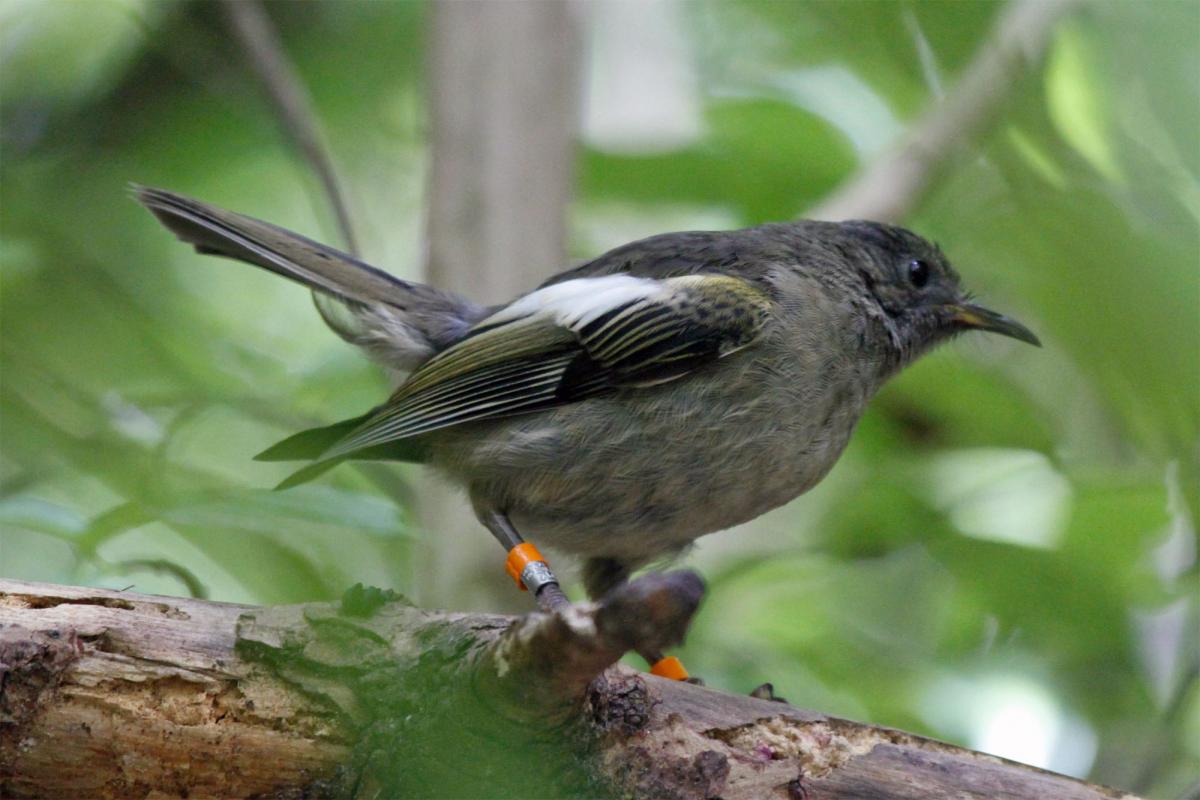
Notiomystis cincta
TAXONOMY
Meliphaga cincta Du Bus, 1839, North Island, New Zealand.
OTHER COMMON NAMES
English: Hihi; French: Mйliphage hihi; German: Hihi; Spanish:
Pбjaro Puntado.
PHYSICAL CHARACTERISTICS
7 in (18 cm); female 1.1 oz (30 g), male 1.3 oz (36 g). Dark head,
throat, and upperparts with white patch behind eye. Yellow
breast with white belly; wings black with yellow and white tips.
DISTRIBUTION
Once widespread on North Island, but the only natural population
is on Little Barrier Island. They have been introduced to
several other islands, including Hen, Cuvier, Kapiti, and Tiritiri
Matingi off North Island and Mokoia Island in Lake Rotorua.
HABITAT
Warm temperate rainforest, especially in gullies.
BEHAVIOR
In pairs in breeding season and small groups at other times.
Male has an aggressive display with tail and ear-tufts raised and
showing off golden shoulders. Although pairs usually mate in
the conventional manner, males sometimes force the female to
copulate by holding her on her back on the ground. Such
males are typically not the partner, and this method of copulating
is apparently unique among birds. High-pitched contact
calls, males give a loud whistling song. Roost in cavities.
FEEDING ECOLOGY AND DIET
Insects are taken by gleaning and sallying. Forage extensively
on nectar and fruit of a wide variety of trees and shrubs, with
proportions varying seasonally.
REPRODUCTIVE BIOLOGY
Breed as monogamous pairs but with frequent extra-pair copulations.
Exceptional among honeyeaters in nesting in hollows
of dead or living trees. Will use nesting boxes on islands
with insufficient natural hollows. Complex nest built of sticks,
fern rhizomes, and rootlets. The nest is mostly built by female
(occasionally more than one), but male may also collect
sticks. Two to five eggs are incubated solely by female for
about 16 days. Young are fed by both parents and fledge at
26–32 days (an exceptionally long period for a honeyeater).
Young join a creche one week after fledging and are not fed
by their parents.
CONSERVATION STATUS
Vulnerable, with population of about 5,000 on Little Barrier
Island. Populations reestablished on other islands remain small
and precarious. Previous threats included over-collection, loss
of nesting hollows, and introduced predators such as black rats
(Rattus rattus).
SIGNIFICANCE TO HUMANS
Feathers of a large number of these birds were incorporated
into Maori ceremonial cloaks.
Photo Gallery of - Stitchbird
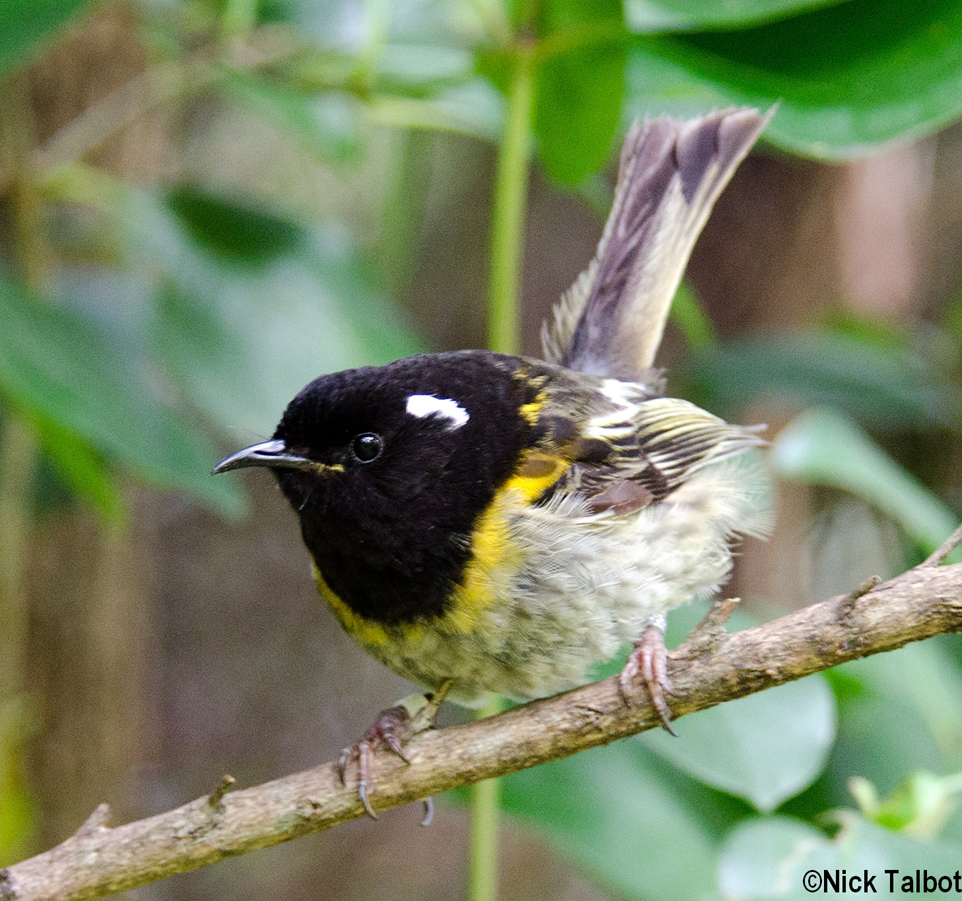
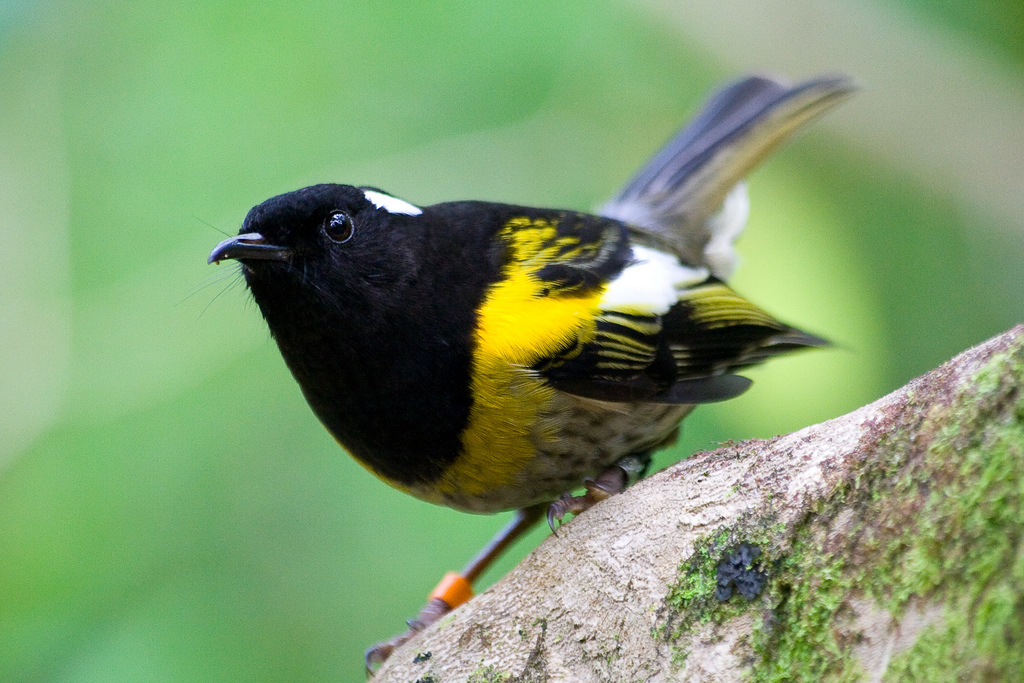
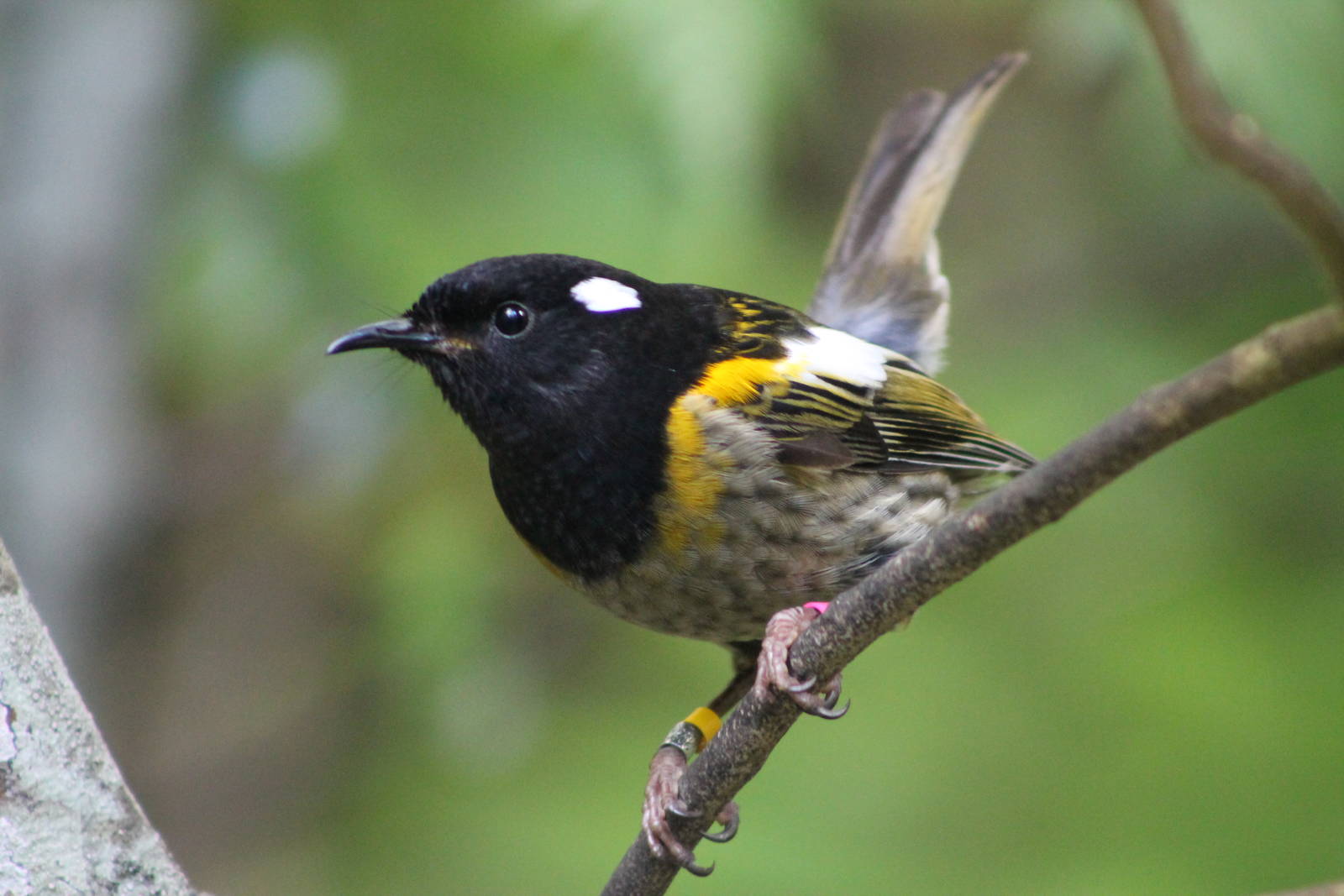
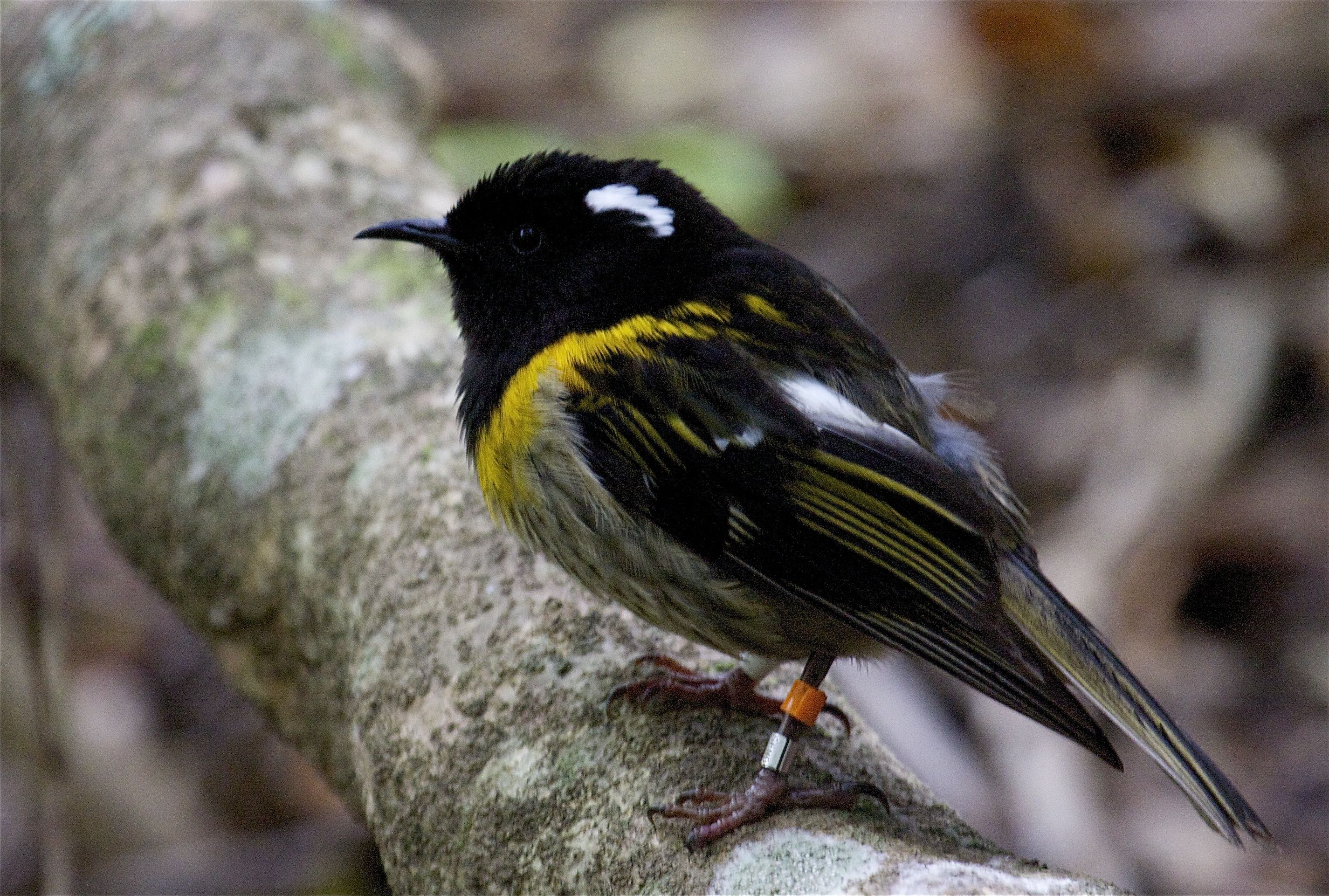
 Animalia Life
Animalia Life